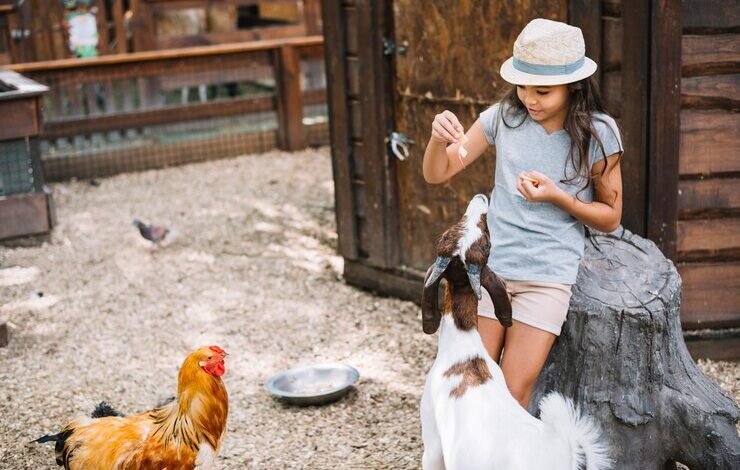Bantam Rooster Cochin Harness Guide for Backyard Chicken Owners

Bantam rooster cochins are, without a doubt, one of the most charming and docile chicken breeds, making them a favorite among backyard chicken enthusiasts. But as delightful as these feathered companions are, managing their outdoor routines can sometimes be a challenge, especially when safety is a priority. This is where a harness becomes a game-changer. Whether you’re letting your bantam rooster roam the backyard or taking him out for some fresh air, a harness ensures his safety while strengthening the bond between you and your bird.
This guide dives into everything you need to know about bantam rooster cochin harnesses, from understanding the breed’s unique characteristics to mastering the art of harness training.
Understanding the Bantam Rooster Cochin
What Makes Bantam Rooster Cochins Special?
Bantam rooster cochins are an ornamental chicken breed known for their fluffy plumage that extends down to their toes, giving them a distinct and adorable look. These chickens are smaller in size, usually weighing less than two pounds, making them ideal for those with limited backyard space.
But their charm isn’t limited to their appearance. Cochins are highly social, docile, and friendly, even with children. Their calm demeanor makes them easy to handle and train, which is part of the reason they’ve become such popular pets in the backyard chicken community.
Advantages and Challenges of Owning Bantam Rooster Cochins
Advantages:
- Personality: Bantam cochins are known for being gentle and affectionate, making them perfect for first-time chicken owners.
- Manageable Size: Their small frame makes them less intimidating to handle and easier to accommodate in smaller coops.
- Temperament: They are less likely to be aggressive, even as roosters, compared to other breeds.
Challenges:
- Flight Risk: Despite their heavy plumage, bantam cochins are capable of short flights and may wander off if unsupervised.
- Outdoor Vulnerability: Their calm personality means they might be less likely to defend themselves from predators.
Benefits of Using a Harness for Bantam Rooster Cochins
Enhancing Safety During Outdoor Activities
Backyard chickens, no matter how well-trained, can be unpredictable. A harness prevents your cochin from wandering off or falling victim to predators when you’re not right by their side.
Preventing Them from Flying Away
Although they aren’t strong fliers, bantam cochins can launch themselves over fences or into tricky situations with a single burst of energy. A harness with a leash attachment ensures they stay grounded and safe while exploring.
Building Trust and Bonding with Your Rooster
The process of harness training can become a bonding activity. Slowly acclimating your rooster to the feel of the harness and guiding him in outdoor activities strengthens the trust between you and your feathered friend.
How to Choose the Right Harness
Factors to Consider
Selecting the perfect harness is crucial for your bird’s comfort and safety. Here are a few things to keep in mind:
- Size: Because bantam cochins are small, ensure the harness is designed for poultry or small pets, with adjustable straps to fit snugly.
- Material: Opt for soft, lightweight materials to prevent chafing against their delicate feathers and skin.
- Design: Look for a harness with easy-to-use clips or buckles, and prioritize a design that won’t restrict their natural movements.
Tips for a Comfortable Fit
- Adjust the straps to ensure a secure fit, but avoid overtightening to allow your bird to move freely.
- Ensure no part of the harness rubs against the wings or legs, as this could lead to discomfort or injury.
Step-by-Step Guide to Harness Training
Step 1: Introduce the Harness
Start by showing the harness to your chicken. Let your rooster investigate it at his own pace. Lay treats around the harness or hold it gently near him to create positive associations.
Step 2: Gradual Acclimatization
Place the harness lightly over your rooster without fastening it. Do this for short intervals (3–5 minutes) daily, gradually increasing the time as he gets used to wearing it.
Step 3: Secure the Harness Properly
Once your rooster seems comfortable, fasten the harness securely. Monitor him closely to ensure he’s at ease and not attempting to wriggle free.
Step 4: First Outdoor Walk
Attach the leash to the harness and head to a familiar, enclosed outdoor area. Allow your chicken to explore at his own pace, offering treats and encouragement. Keep the first walk short, around 10–15 minutes, and gradually increase the duration with each outing.
Common Mistakes to Avoid
Rushing the Process
Don’t rush your rooster into harness training. Give him time to adjust to the unfamiliar sensation of wearing a harness.
Using the Wrong Size or Type of Harness
A poorly fitting harness can cause discomfort or even injury. Always opt for a harness designed specifically for chickens or small pets.
Forgetting to Inspect the Harness
Regularly check the harness for signs of wear and tear. Replace any damaged harnesses to ensure the safety of your feathered friend.
Why Every Bantam Rooster Needs a Harness
Harness training your bantam rooster cochin isn’t just a functional choice; it’s an opportunity to enhance your relationship with your bird while keeping him safe in outdoor spaces. By following the steps and tips outlined above, you can ensure a stress-free, enjoyable experience for both you and your rooster.



